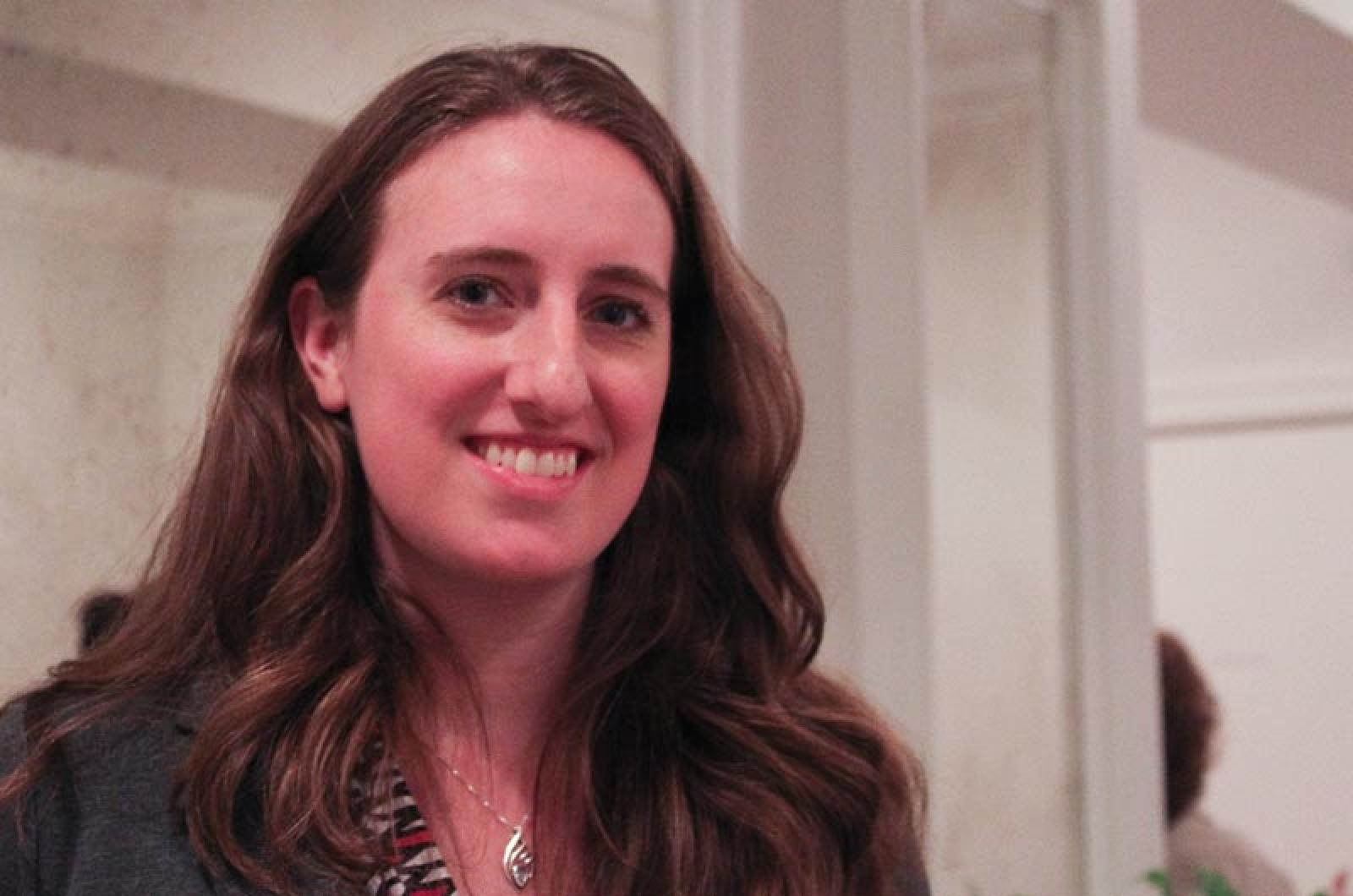If you were looking to take the pulse of the Island arts community this week, the Harbor View Hotel was the place to be.
A large group of Island arts leaders and planners convened there Tuesday to listen to a presentation by Lyz Crane, director of partnerships and special projects at ArtPlace America. The talk was the first in a series of creative economy speakers lined up to discuss how to leverage the arts for economic prosperity on the Vineyard.
Arts Martha’s Vineyard is an arts and culture collaborative formed last year to promote creative activity on the Island. Their central marketing campaign, Fall for the Arts, bills the Vineyard as a vibrant cultural community during the fall season.
Ms. Crane, the speaker, represented ArtPlace, a collaboration of major art foundations that works to promote and fund creative placemaking in communities across the United States. Placemaking is the process of redesigning and planning public spaces to promote commerce and well-being. The term creative placemaking has a wide range of applications, and the projects funded by ArtPlace grants vary. “It can mean many things, and it can be a little hard to define,” she said.
Ms. Crane described the work of grant recipients throughout the country, which she said go beyond the usual inclination to just “put a statue on it,” she said. Instead, the projects involve more sophisticated collaborations among community groups, and involve a cohesive design and branding process that helps distinguish their place from others. Many of the grant winners developed signature art events that fit their town’s brand, or formed partnerships with businesses to create cultural destinations within the community. The state of Connecticut received a grant recently to temporarily repurpose empty storefronts for art-making and for use as temporary gallery spaces. The town of Plattsville, N.Y., which was leveled by Hurricane Irene, used its ArtPlace funds to offer residencies to artists who then took part in the project to redesign the town.
In the past three years, ArtPlace has given out $43 million in funds, with individual grants valued at between $200,000 and $300,000. The grants are all for a single year and are not designed to offer sustainable funding, Ms. Crane said.
Some wondered if the ephemeral nature of the grants make them less meaningful. “It seems like one of these pop-up, brushfire-like organizations that light these brushfires and some of them get put out, and some create major fires that then translate into a national catastrophe where you can build around an art place,” said Gaston Vadasz, a retiree who lives in West Tisbury. “I think it’s a very interesting incubating idea, but . . . one always hopes that it can be sustained.”
Ms. Crane said the projects are designed to be catalysts that lend a new face to the spaces they affect and expand the possibilities for use of the space going forward. In places where grants have been used, she said she has observed an atmospheric shift. “People are excited about what the place can be.” Her foundation is similarly impermanent, she said. “There is a set period that ArtPlace will be around for,” she said, noting that it is designed to inspire communities with public funds, and then create demand within local economies for the type of creative production that the grant encouraged. “If we are successful, theoretically, the field won’t need us to go on,” she said. Instead, she hopes local and regional governments will invest in their own public art projects for the long term.
Arts Martha’s Vineyard also hopes to secure broader financial support for its marketing campaigns. Vineyard Haven is prepared to apply to the Cape Cod Chamber of Commerce for designation as a cultural district. Last year, ArtPlace named Vineyard Haven one of its top 12 small town art places.
“The ball is rolling, and we hope to be able to do more in all of our towns, and the Island as a whole,” said Ann Smith, chairman of the Arts Martha’s Vineyard steering committee.
Almost two years ago, a study found that the creative sector makes up more than 10 per cent of the Island’s economy. With a concerted effort by nonprofit organizations, local governments and the private sector, especially in the shoulder season, Arts MV reasons that they can increase that percentage. “With coordinated efforts and with planned events, we think we can drive that number even higher,” Ms. Smith said. “We are trying to educate the public that arts and culture is good for business and it’s good for Martha’s Vineyard.”
To that end, Martha’s Vineyard and Nantucket joined Fall for the Arts, a marketing campaign originally started five years ago by the Cape Cod Chamber of Commerce to promote travel to the Cape during the shoulder season. “We want to communicate that there really is a shoulder season worth traveling back for,” Ms. Smith said. The Cape Cod Chamber released a Vineyard-specific phone app last year. Arts MV posts October cultural events on its website.
The Tuesday speaker series includes an Island media panel discussion on Oct. 8; a visit from Betsy Wall, executive director of the Massachusetts Office of Travel and Tourism on Oct. 15; a talk by Wendy Northcross, director of the Cape Cod Chamber of Commerce on Oct. 22; and finally the return of speaker Helena Fruscio, state creative economy industry director with the department of Housing and Economic Development on Oct. 29.
Ms. Crane left the event with a stack of business cards, but it remained unclear whether she saw a need for her services here.
“In many ways I think the Island has achieved a distinct sense of place all on its own, with the arts and with everything already,” she said. “In many ways, I think you all are light years ahead in the ways that you crafted this beautiful sense and aesthetic in your area.”







Comments
Comment policy »